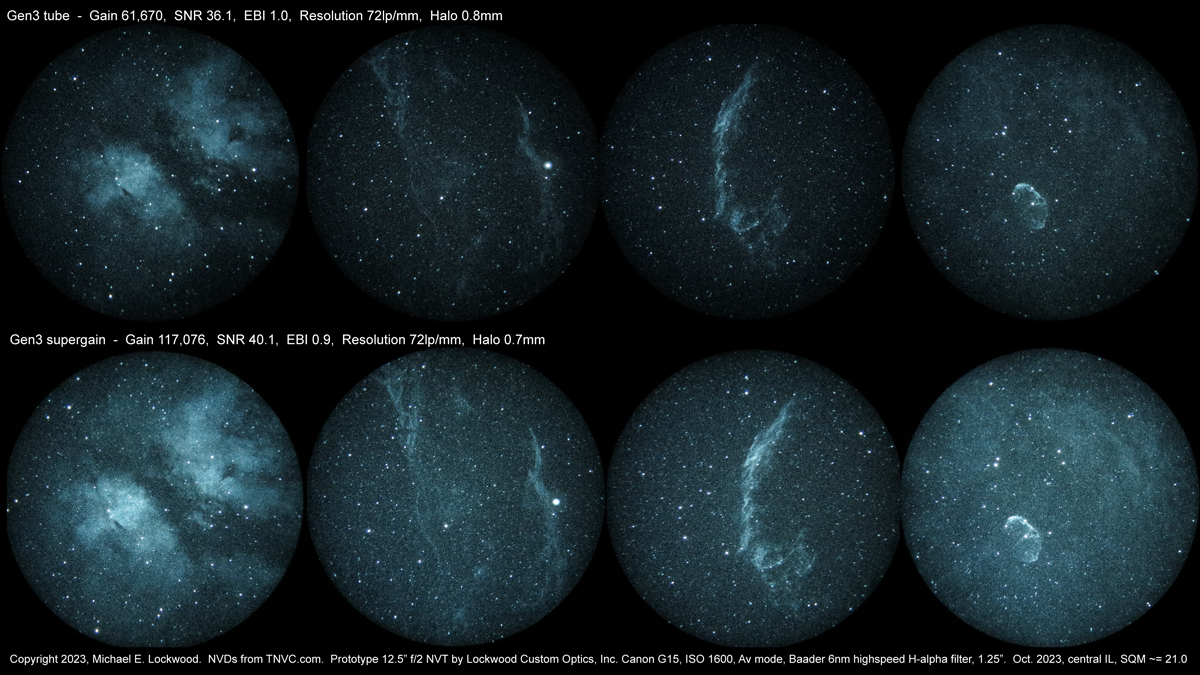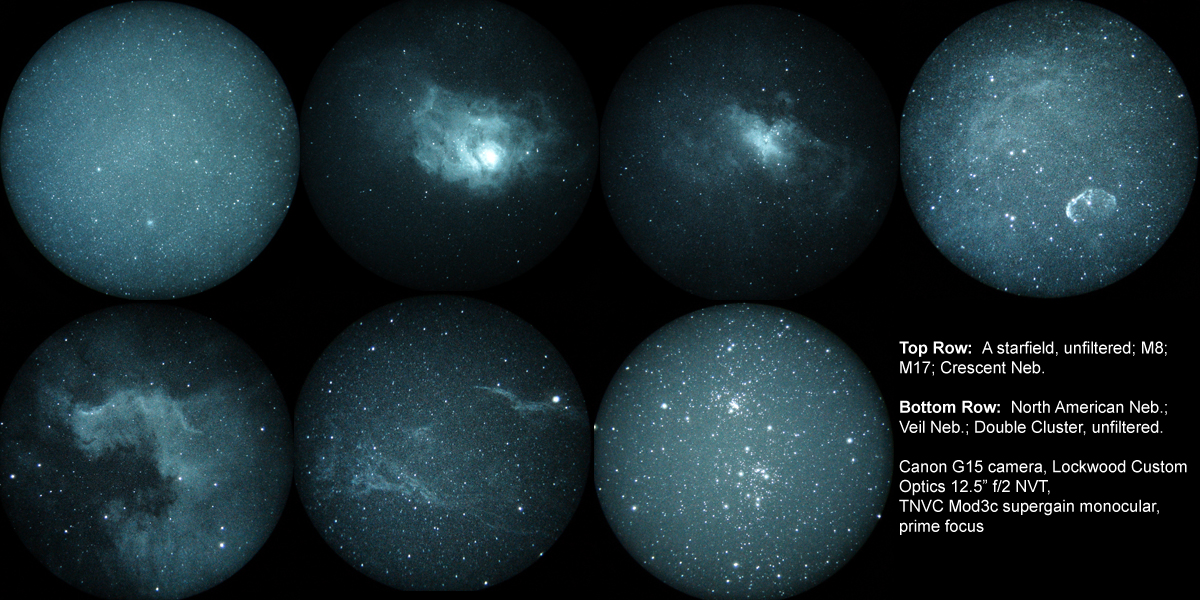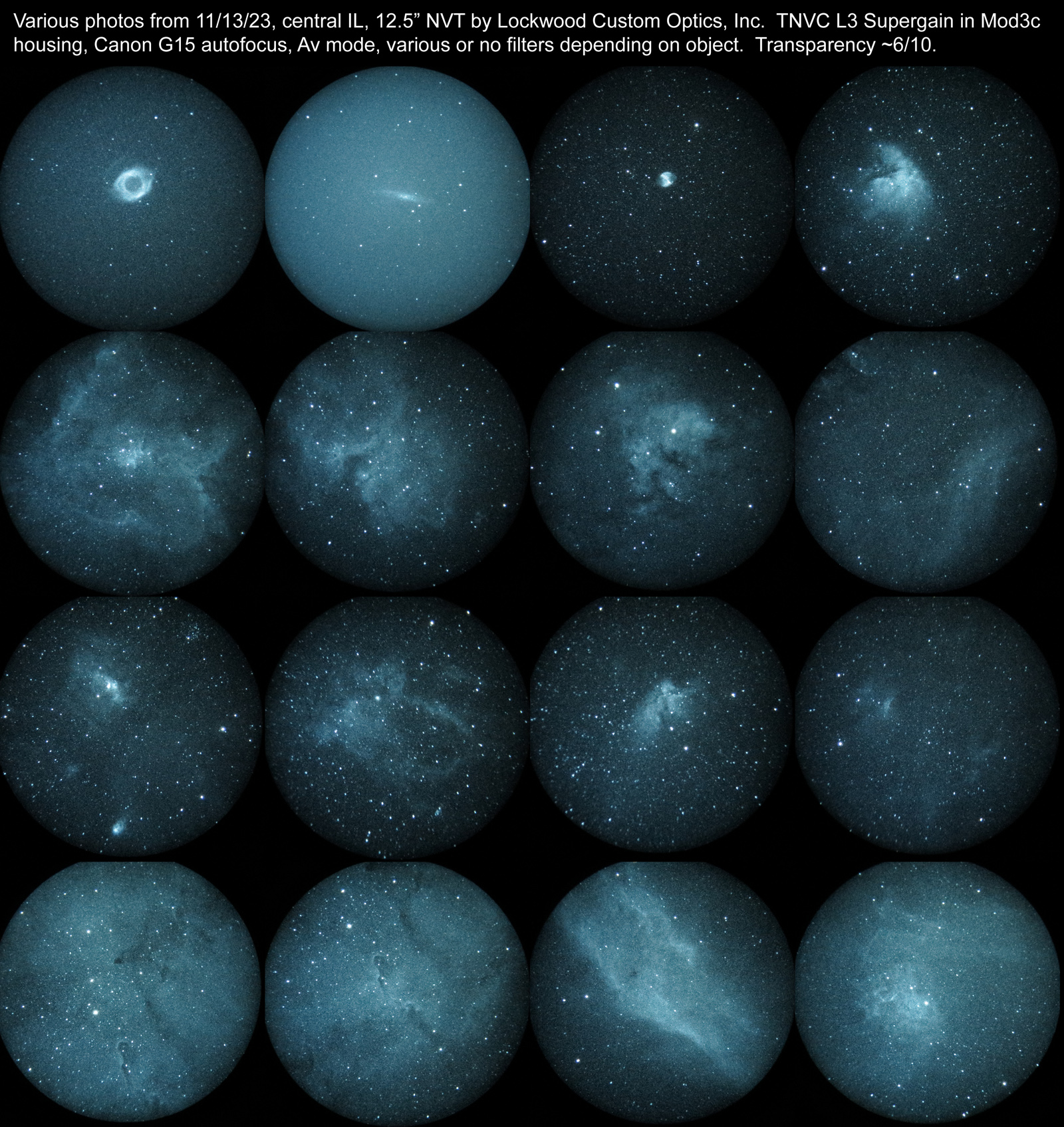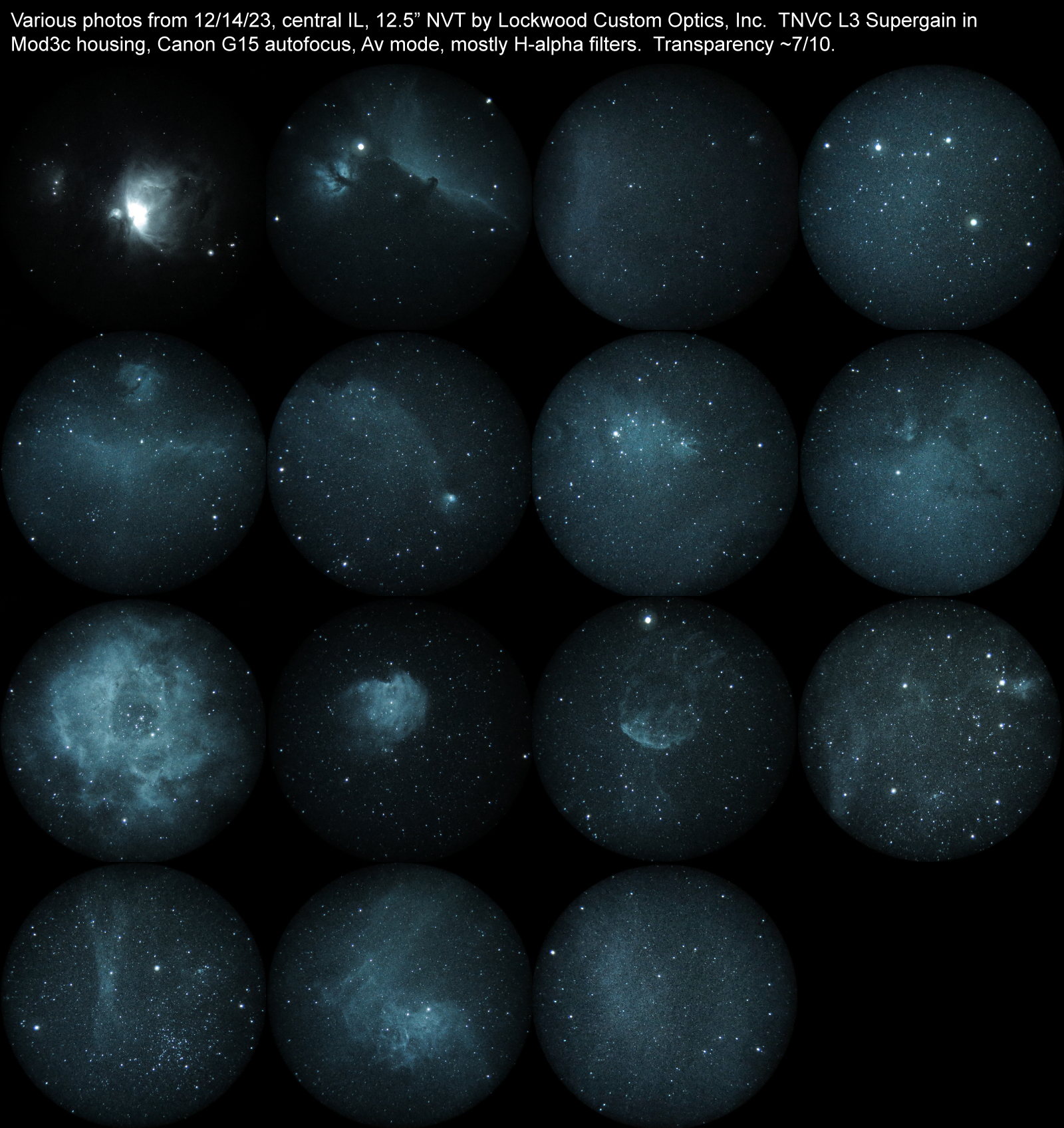Lockwood Custom OpticsAdventures in Nightvision - Part 2
|
Part 2 is here! November 15, 2023 Well it's been long enough and I've done enough nightvision observing, photography, and telescope construction that I decided it was time to start fresh with another article so that it wouldn't become a cumbersome and slow-loading mess. In early 2023, I conceived the idea of building a dedicated nightvision telescope that was designed specifically for the task. With the help of an optical designer and a lens-making shop, this August and September I built the prototype and took it to the Okie-Tex Star Party. For more on the telescope, please read my article about Okie-Tex 2023. I've done more observing with the telescope since the star party, and I had the opportunity to compare regular and supergain L3 tubes supplied by TNVC. I concluded that the extra gain was a significant advantage for viewing and taking photos of objects, and I purchased that one. Here's a mosaic showing the difference using the 12.5" NVT and exact same camera settings on the same night.  Now that the comparison is complete, I have been using the Mod3c supergain unit at my home to take photos and show what the 12.5" f/2 system can do. I think the images speak for themselves. All are single images with the same Canon G15 camera, simply held up to the ocular to take simgle images, using settings similar to the images above. There is no sophisticated in-phone stacking and processing like the very newest and most expensive phones do, it's just one image. Stacking would improve the images, but I don't have time to do that right now, and the camera does not do it internally. So you get the raw images.  So you can see the image quality better, here's a larger version of that starfield, which contains a globular. To the eye, it was fairly well resolved, the picture doesn't quite capture the full resolution. And finally, the mother of all mosaics, sixteen more images taken with the 12.5" f/2 with the supergain tube.  You'll recognize most of the objects, have fun identifying them. This concludes this installment of Nightvision - Part 2. |
Dec. 14, 2023 I have been working to add blackening and baffling to the 12.5" NVT, and on this afternoon I worked on baffling the filter wheel and covering some interior surfaces that were causing stray light issues with flocking. I also made a temporary cardboard baffle for the front of the telescope. The forecast was good, and this work paid off because I finally had a good night when I could get some photos of Orion, Monoceros, and some objects in Gemini and Auriga. It was definitely not a perfect night, but at least the haze and moisture in the air was less present than it had been. I believe that various H-alpha filters were used for all objects, but I'm not sure exactly which one. I have three in the filter wheel - a 12nm Astronomik, and 6nm and 3.5nm Baader f/2 high-speeds. I still haven't devised a camera holder, but luckily the flat surfaces of the camera lens and the NV unit without the eyecup mate nicely, though it is tricky to prevent the camera from sliding around and getting off center or moving as I take an image. Orion really requires an HDR image to capture even close to properly, so that will be a project for the future when I can take three or more images that are aligned reasonably well. In the mosaic below, from left to right, the objects are: Row 1: M42, Horsehead and Flame, Barnard's Loop and M78, Lambda Orionis Row 2: Seagull Nebula w/IC 2177, Seagull Nebula w/Sh2-297, Cone Nebula, area adjoining Cone Nebula Row 3: Rosette Nebula, Monkey Head Nebula (NGC 2174), Jellyfish Nebula, some nebulosity in Auriga Row 4: First two - various areas of nebulosity in central Auriga, the split at the top of Barnard's loop  It was great to share these views with a couple of friends on this night, and overall I am very pleased with the photos, even though they don't capture all that you can see with your eye. (If you are curious, tube specs are included in the first image in this article, the second row is this supergain tube used for these images.) My favorite shot might be the beautiful mixture of two different-sized star clusters with the "X" or "Y" of nebulosity in the bottom left image, showing how some areas of the sky exibit a beautiful richness when nightvision brings out different features. I forgot to shoot the California Nebula, and it looked just plain photographic while nearly overhead on this fairly good night. Next time! On this night, with my PVS-14 unit and a 3.5nm Antlia H-alpha filter, my friends and I saw the top-most part of the Eridanus Loop to the west of Orion, something I've never seen before. I did not have time to get a photo. I could tell that there might be something below it, but I could not identify the structure. I'm looking forward to WSP to hopefully see more of this structure and maybe explore it. It will be up about 15 degrees higher in the sky there, and will be in a darker area of the sky. The Vela SNR will also be a great target for this telescope. Finally, here is the Crab Nebula with an H-alpha filter (I think the 6.5nm, but I'm not sure) on the left, and the Celestron LPR/UHC filter (right), which, again, works surprisingly well for NV. (Any issues with star images near the edge are due to my imperfect centering of the camera or the NV ocular.) Come back for more updates. February, 2024 - Winter Star Party If you're reading this, make sure you check out my WSP 2024 article, which contains a bunch more photos of various objects through the 12.5" f/2 NVT. This also includes southern sky objects that I can't see where I live, and probably not where you live, either, including Eta Carina and the Vela Supernova Remnant. I'll be back here with another update when I have one. If you haven't read it, see Adventures in Nightvision - Part 1, the precursor to this installment. More nightvision adventures to come..... stay tuned and don't forget to keep calm and keep your gain knob sensibly set! -Mike Lockwood, Lockwood Custom Optics |